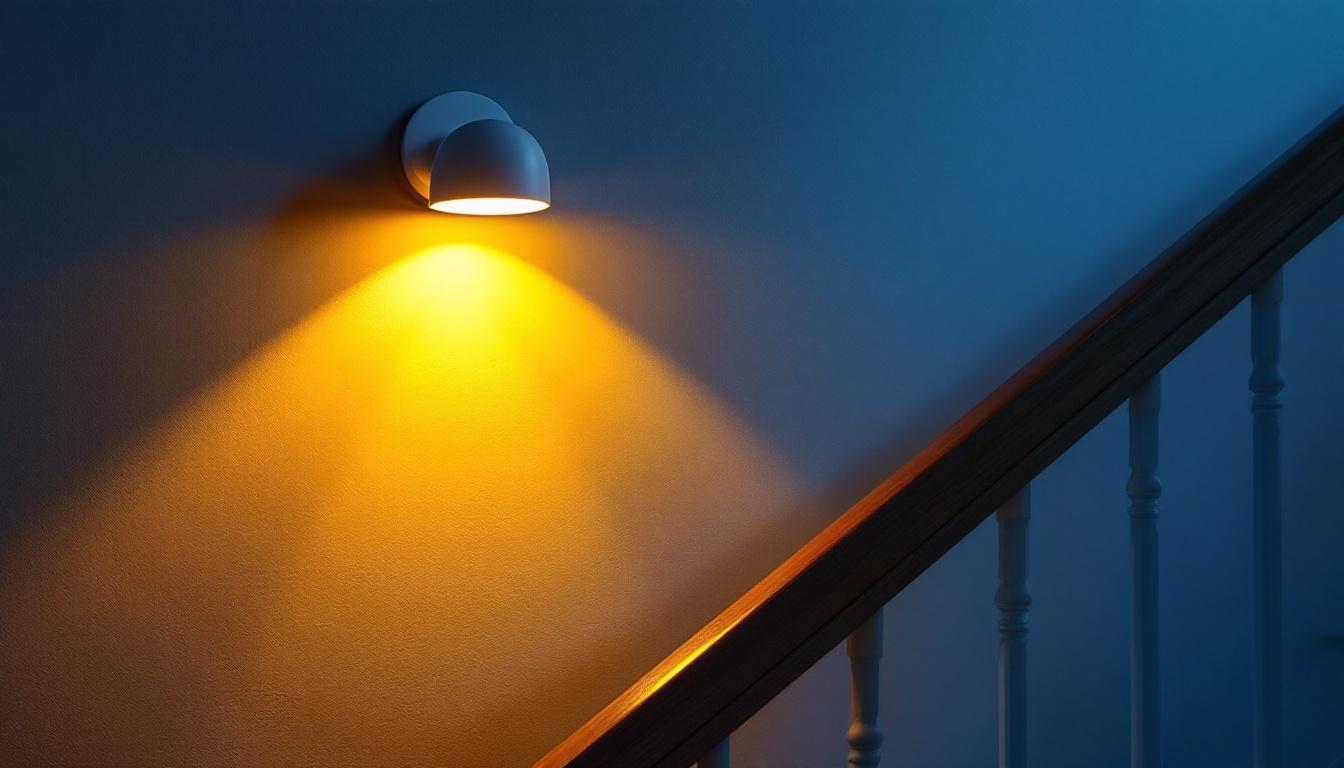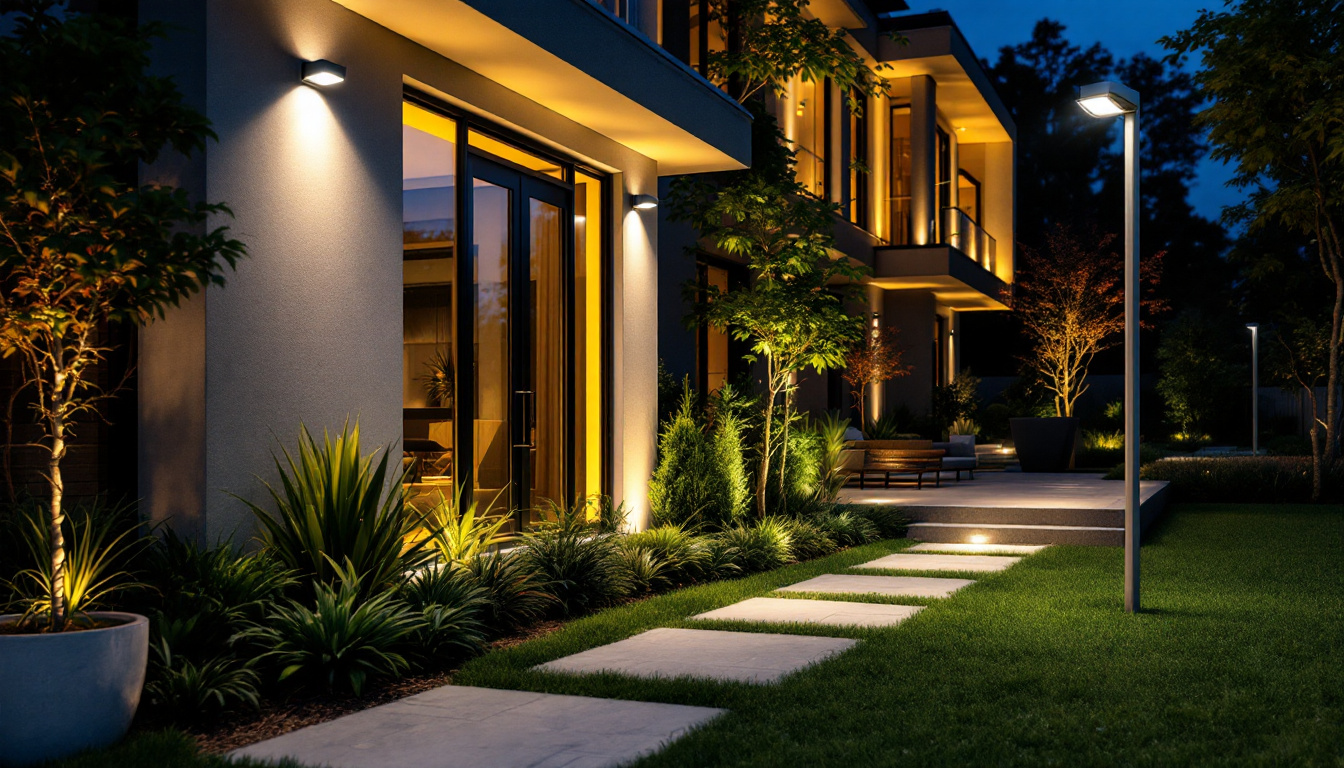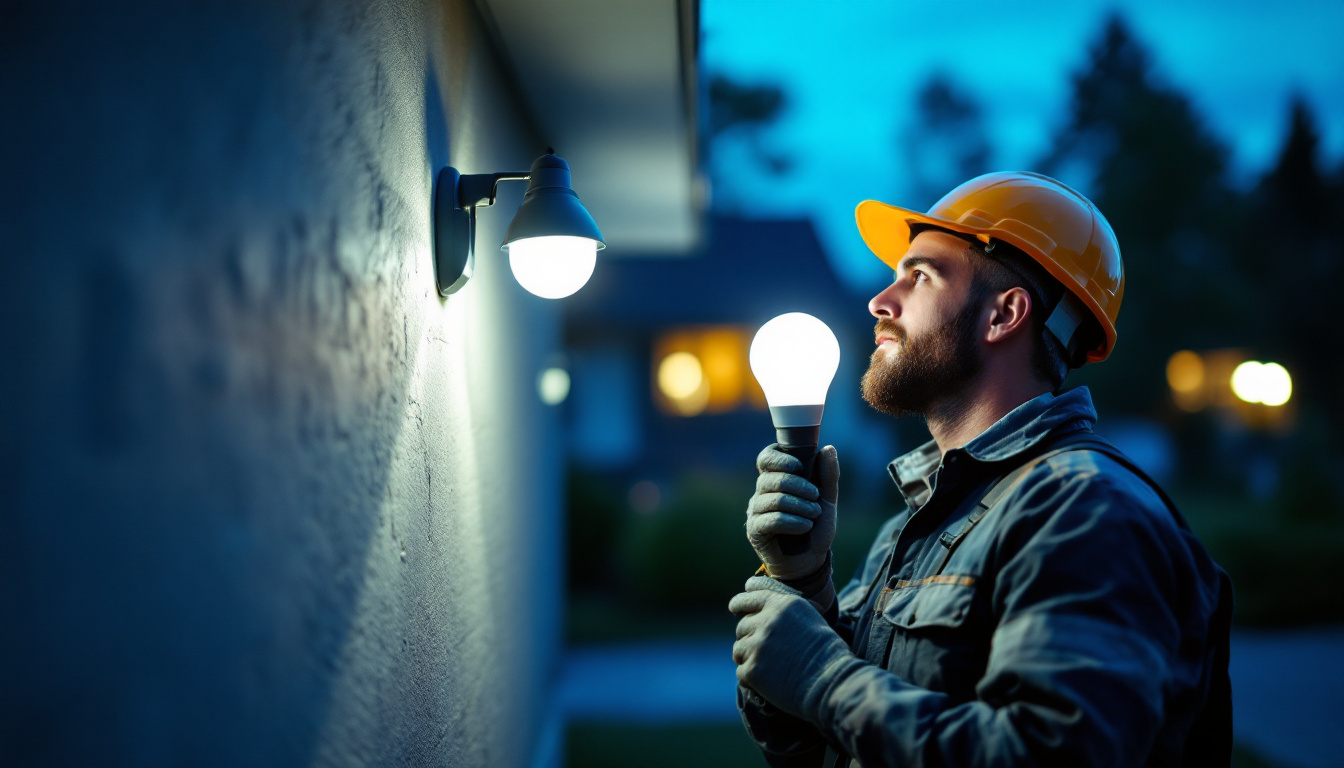
As a lighting contractor, ensuring that your stairwell lighting installations are both functional and aesthetically pleasing is paramount. Wall-mounted stairwell lighting not only enhances safety but also contributes to the overall ambiance of a space. This checklist will guide you through the essential considerations and steps to ensure a successful installation.
Stairwells are often overlooked when it comes to lighting design, yet they serve a critical function in any building. Proper lighting in stairwells can prevent accidents, improve visibility, and enhance the overall user experience. Moreover, well-lit stairwells can add a touch of elegance and style to a property.
In addition to safety, wall-mounted lighting can be an integral part of a building’s design scheme. It can highlight architectural features, create a welcoming atmosphere, and even contribute to energy efficiency when designed thoughtfully. The choice of fixtures can also reflect the character of the building, whether it be a sleek modern office or a charming historical residence, thus making stairwell lighting an essential element of cohesive interior design.
When planning your stairwell lighting, safety should be your top priority. Poorly lit stairwells can lead to accidents, making it essential to provide adequate illumination. The lighting should be bright enough to allow individuals to see each step clearly, especially in commercial buildings where foot traffic is high.
Consider using fixtures that provide even light distribution to eliminate shadows. This can help in preventing trips and falls, particularly in emergency situations where quick evacuation is necessary. Additionally, incorporating motion sensors can enhance safety by automatically turning lights on when someone approaches the stairs. Furthermore, using non-slip materials for stair treads and ensuring that handrails are well-lit can further enhance safety measures, creating a comprehensive approach to stairwell design that prioritizes user well-being.
While functionality is crucial, the aesthetic aspect of stairwell lighting should not be neglected. Wall-mounted fixtures come in various styles, shapes, and finishes, allowing you to choose options that complement the overall design of the space. Whether the goal is to create a modern, minimalist look or a more traditional ambiance, there are fixtures available to suit any design preference.
Consider the color temperature of the lighting as well. Warmer tones can create a cozy atmosphere, while cooler tones may lend a more contemporary feel. The right combination of style and light can transform a simple stairwell into a striking feature of the building. Additionally, integrating dimmable lighting options can allow for flexibility in ambiance, enabling the space to adapt to different times of day or events. Accent lighting can also be used to draw attention to artwork or architectural details, making the stairwell not just a passageway, but a visual journey that captivates and engages those who traverse it.
With a plethora of options available, selecting the right wall-mounted fixtures for stairwell lighting can be overwhelming. However, focusing on a few key factors can simplify the decision-making process. It’s essential to consider not only the aesthetic appeal but also the functionality and safety that these fixtures will provide, especially in high-traffic areas like stairwells.
There are several types of wall-mounted fixtures that are suitable for stairwells. Sconces are a popular choice as they can provide both ambient and task lighting. They can be installed at various heights to ensure that light is directed where it is needed most. The design of sconces can also vary widely, from sleek modern styles to more traditional options, allowing homeowners to match their lighting with their overall decor.
Another option is LED strip lighting, which can be placed along the edges of the stairs or walls. This not only provides illumination but can also create a visually appealing effect. The flexibility of LED strips allows for creative designs, such as color-changing options that can enhance the mood of the space or highlight architectural features. Additionally, recessed lighting can be used to maintain a clean and unobtrusive look while still ensuring adequate light levels. This type of lighting can be particularly effective in narrow stairwells, where wall space is limited.
In today’s world, energy efficiency is a significant consideration for any lighting installation. LED fixtures are an excellent choice for stairwell lighting as they consume less energy and have a longer lifespan compared to traditional incandescent bulbs. This not only reduces energy costs but also minimizes the frequency of replacements, making them a cost-effective solution in the long run. Furthermore, the lower heat output of LEDs contributes to a cooler environment, which can be particularly beneficial in enclosed stairwells.
Moreover, consider incorporating smart lighting systems that allow for automation and remote control. These systems can adjust brightness levels based on occupancy, further enhancing energy savings while ensuring that the stairwell is adequately lit at all times. For instance, motion sensors can activate lights when someone approaches, providing safety and convenience. Additionally, programmable timers can be set to dim or turn off lights during off-peak hours, optimizing energy use without sacrificing safety. By integrating these technologies, homeowners can create a more responsive and efficient lighting system that adapts to their lifestyle and needs.
Once the fixtures have been selected, the next step is the installation process. Proper installation is crucial for ensuring that the lighting functions as intended and meets safety standards.
The height at which wall-mounted fixtures are installed is vital for effective illumination. Generally, fixtures should be mounted between 60 to 72 inches above the ground, depending on the specific design and purpose of the space. This height allows for optimal light distribution without being obstructive.
Placement is equally important. Fixtures should be installed at regular intervals along the stairwell to ensure even lighting. A common practice is to place lights every 6 to 8 feet, but this can vary based on the width of the stairwell and the brightness of the fixtures used.
As with any electrical installation, adhering to local codes and regulations is essential. Ensure that all wiring is done according to the National Electrical Code (NEC) and any local amendments. This includes using appropriate wire gauges and ensuring that all connections are secure.
Additionally, consider using weatherproof fixtures and wiring if the stairwell is exposed to outdoor elements. This will help prevent damage and ensure the longevity of the installation.
After installation, regular maintenance is necessary to keep stairwell lighting functioning optimally. This includes periodic cleaning of fixtures and checking for any signs of wear or damage.
Dust and debris can accumulate on light fixtures, diminishing their effectiveness. Regularly cleaning the fixtures with a soft cloth can help maintain their brightness and appearance. For more intricate designs, it may be necessary to follow specific cleaning instructions provided by the manufacturer.
In addition to cleaning, it’s essential to inspect the fixtures for any signs of malfunction. This includes checking for flickering lights, burned-out bulbs, or any unusual noises. Addressing these issues promptly can prevent further complications and ensure that the stairwell remains well-lit and safe.
As technology advances, upgrading fixtures can provide enhanced functionality and efficiency. Consider replacing older fixtures with newer LED options or smart lighting systems that offer better control and energy savings. This not only improves the lighting quality but can also enhance the overall aesthetic of the stairwell.
Furthermore, staying informed about the latest trends and technologies in lighting can help contractors provide clients with the best possible solutions. Regularly attending industry workshops or trade shows can be beneficial for keeping up-to-date with innovations in lighting design.
Effective communication with clients is crucial throughout the lighting installation process. Educating clients about the importance of stairwell lighting and the options available can lead to more informed decisions and greater satisfaction with the final result.
Every client has unique preferences and requirements when it comes to lighting. Taking the time to understand their vision and needs can help in recommending the most suitable fixtures and designs. This may involve discussing their aesthetic preferences, budget constraints, and any specific safety concerns they may have.
Engaging clients in the design process can also foster a sense of ownership and satisfaction with the project. Providing visual aids such as mock-ups or samples can help clients visualize the final outcome, making it easier for them to make decisions.
Once the installation is complete, offering post-installation support can enhance client relationships and lead to repeat business. This can include providing maintenance tips, answering any questions they may have, and being available for future upgrades or repairs.
Additionally, soliciting feedback after the project is completed can provide valuable insights into the client’s experience. This information can be used to improve future installations and enhance service quality.
Wall-mounted stairwell lighting is an essential aspect of any lighting contractor’s portfolio. By following this comprehensive checklist, contractors can ensure that their installations are safe, functional, and visually appealing. From understanding the importance of stairwell lighting to selecting the right fixtures and ensuring proper installation, each step plays a critical role in delivering high-quality results.
Ultimately, effective communication with clients and a commitment to ongoing maintenance and support can elevate a contractor’s reputation and lead to long-term success in the industry. By prioritizing safety, aesthetics, and energy efficiency, lighting contractors can create stairwell lighting solutions that not only meet but exceed client expectations.
Ready to elevate your stairwell lighting projects with the finest selection of wall-mounted fixtures? Look no further than LumenWholesale, where we offer spec-grade lighting products that combine quality, affordability, and convenience. Say goodbye to inflated markups and hello to unbeatable wholesale prices, all while enjoying the benefits of free shipping on bulk orders. Don’t compromise on your lighting needs—choose LumenWholesale for Wholesale Lighting at the Best Value and make every installation shine with excellence.

Discover how LED floodlights can transform your outdoor spaces with innovative lighting designs.

Discover the importance of stainless steel light switches for lighting contractors—enhance durability, safety, and aesthetics.

Discover how incorporating outdoor flood light bulbs into your projects can elevate your lighting contracting business.

Discover essential tips and insights for lighting contractors on mastering the installation and optimization of solar-powered motion lights for outdoor spaces.